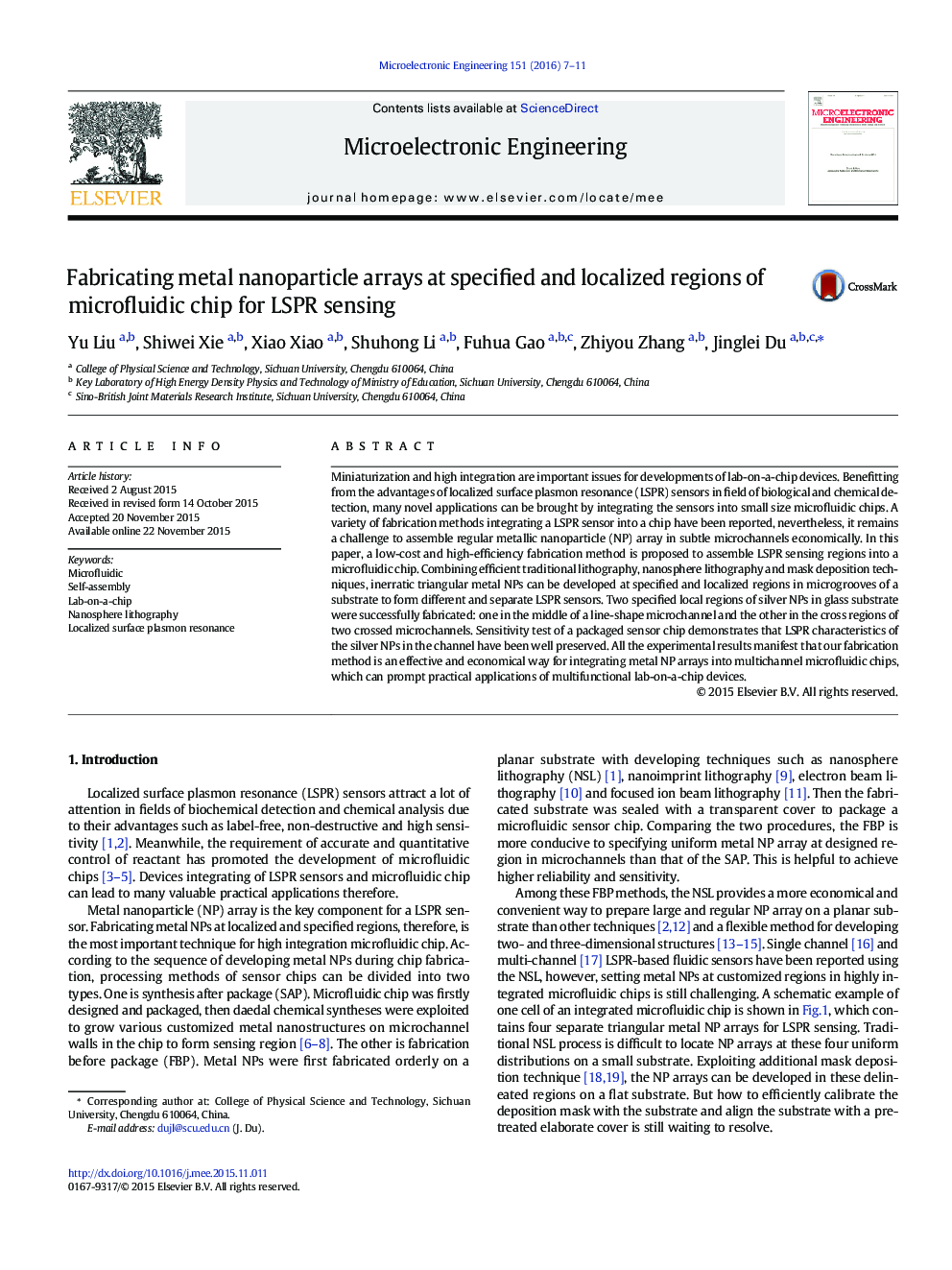| Article ID | Journal | Published Year | Pages | File Type |
|---|---|---|---|---|
| 539015 | Microelectronic Engineering | 2016 | 5 Pages |
•A fabrication method for developing substrate of LSPR sensor with low cost.•Metal nanoparticles are fabricated directly into microgrooves of the substrate.•Regular nanoparticle arrays can be designed at specified and localized regions.•The substrate can be conveniently packaged into microfluidic sensor chips.•This method is helpful for the preparation of multifunctional lab-on-a-chip.
Miniaturization and high integration are important issues for developments of lab-on-a-chip devices. Benefitting from the advantages of localized surface plasmon resonance (LSPR) sensors in field of biological and chemical detection, many novel applications can be brought by integrating the sensors into small size microfluidic chips. A variety of fabrication methods integrating a LSPR sensor into a chip have been reported, nevertheless, it remains a challenge to assemble regular metallic nanoparticle (NP) array in subtle microchannels economically. In this paper, a low-cost and high-efficiency fabrication method is proposed to assemble LSPR sensing regions into a microfluidic chip. Combining efficient traditional lithography, nanosphere lithography and mask deposition techniques, inerratic triangular metal NPs can be developed at specified and localized regions in microgrooves of a substrate to form different and separate LSPR sensors. Two specified local regions of silver NPs in glass substrate were successfully fabricated: one in the middle of a line-shape microchannel and the other in the cross regions of two crossed microchannels. Sensitivity test of a packaged sensor chip demonstrates that LSPR characteristics of the silver NPs in the channel have been well preserved. All the experimental results manifest that our fabrication method is an effective and economical way for integrating metal NP arrays into multichannel microfluidic chips, which can prompt practical applications of multifunctional lab-on-a-chip devices.
Graphical abstractFigure optionsDownload full-size imageDownload as PowerPoint slide
